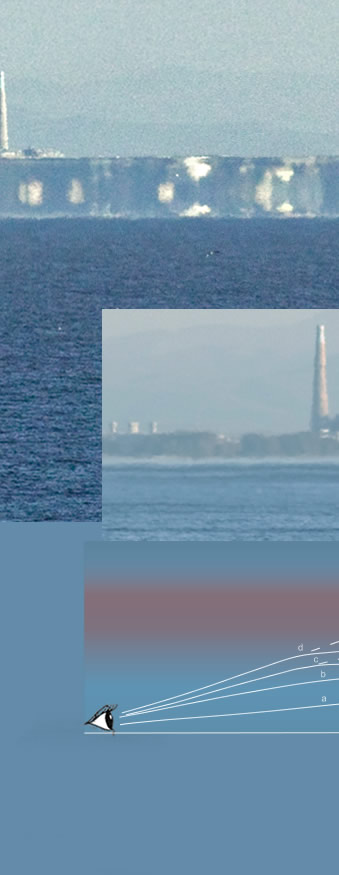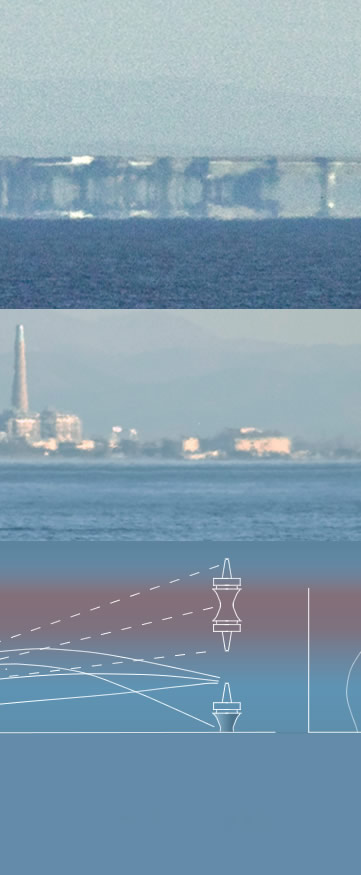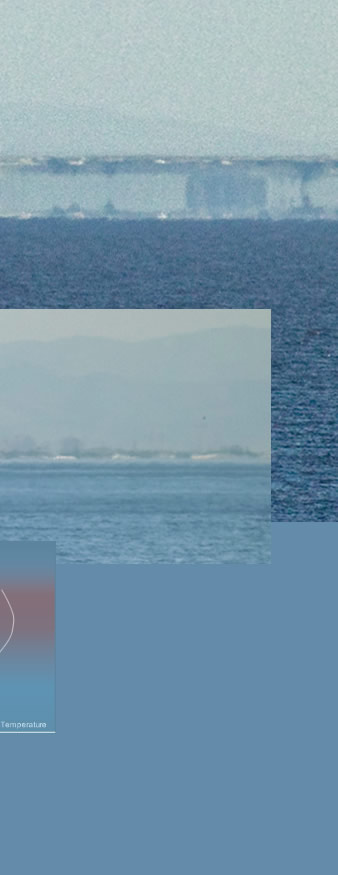Mirage across Monterey Bay, California from Santa Cruz. Imaged by James Perdue (images) November 21, '07. ©James "Newt" Perdue, shown with permission.
This classic superior mirage lasted for about15 minutes. The inset image shows the scene when the mirage had mostly gone. The smokestacks are ~16.5 miles SE across the water at Moss Landing.
The mirage comprises two coastline images and possibly a third. The lowest starts at the 'normal' sea boundary and is erect. Above that is an inverted view and at its top there are fragments of a third erect image.
Cold air trapped beneath warmer, a temperature inversion, created the mirage. Light rays passing slightly upwards between the dense colder air and the upper warm air are refracted so that ray paths become curved and concave to the horizon level. I.e. they tend to curve downward. The ray curvature is strongest where the vertical temperature gradient is greatest.
In the diagram, the ray 'b' from a ship's mast is slightly curved making it mast appear to be at a point above the 'real' ship. Ray 'c' from the hull encounters a higher region of even greater temperature gradient and is more strongly refracted. Where ray crossing occurs the resulting image is inverted - an upside down ship sails above the lower one. When the inversion layer is thick enough, rays from the mast have a third route 'd' through upper warmer air towards the eye or camera. They form a third image - this time the right way up. The Fata Morgana is a more extreme superior mirage.
|




